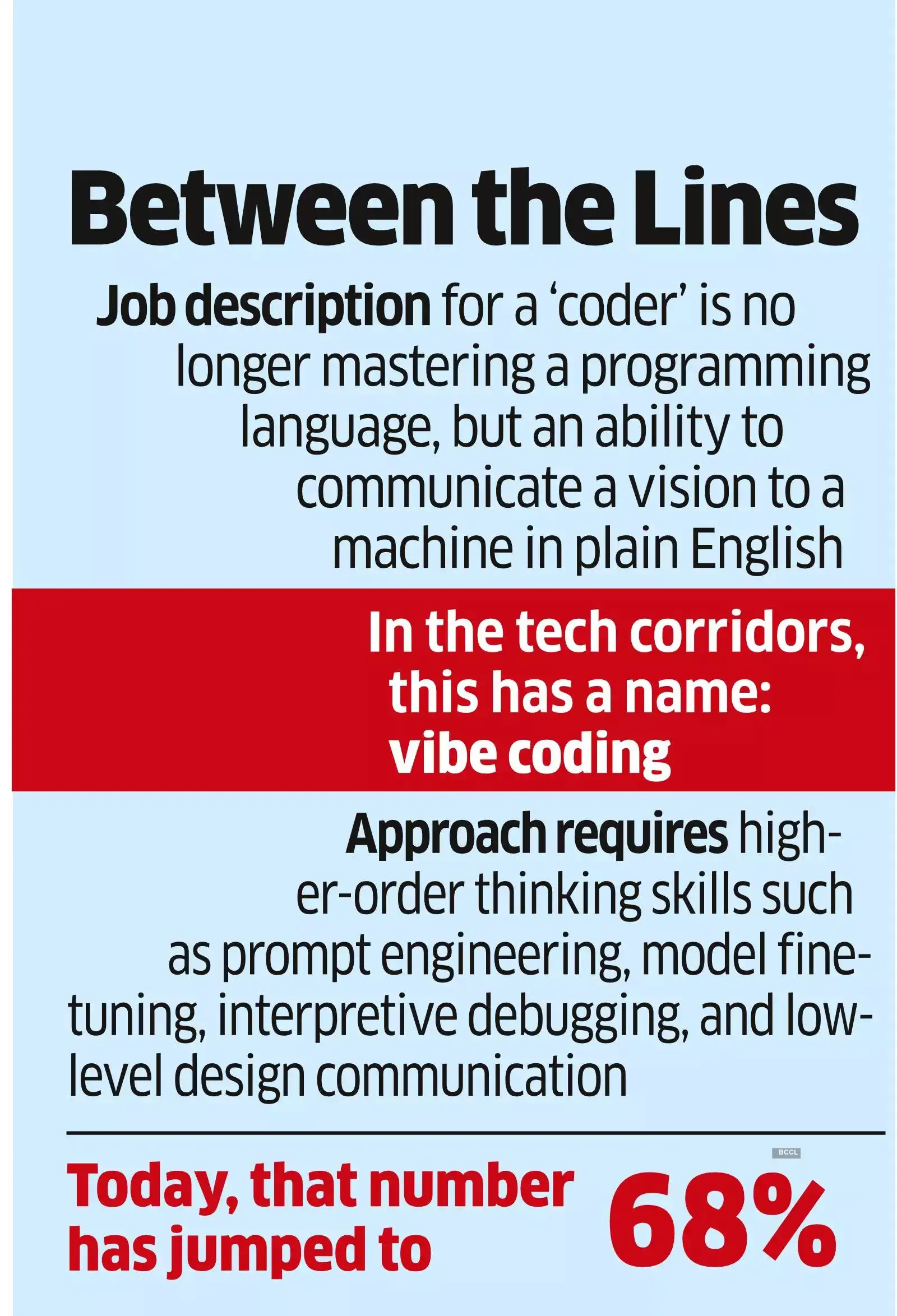company in Noida, has a confession: he has outsourced coding. He spends his working days instructing an AI system precisely what code he wants it to write for him.Bansal reflects a seismic shift happening across the tech industry in India and elsewhere. The job description for a 'coder' is no longer mastering a programming language, but an ability to communicate a vision to a machine in plain English. In the tech corridors, this has a name:
vibe coding. "Vibe-coding is a new way of writing code," said Jitendra Kumar, chief technology officer at online digital skills platform SimpliLearn.
Rather than rote coding proficiency, this approach requires higher-order thinking skills such as
prompt engineering, model finetuning, interpretive debugging, and low-level design communication - or the ability to clearly explain the solution process for a problem, Kumar added.
For India's large tech workforce, the implications are profound. Developers today must learn how to craft prompts, communicate complex tasks in plain English, and assess AI-generated outputs with precision and clarity. "Vibe coding is fundamentally changing the way we build," Bansal explained. "It's fast, intuitive, and lets us bring ideas to life in hours instead of weeks. The real skill now is knowing how to ask the AI the right questions and shaping the output into something great."
The pressure to adapt is intensifying. According to hiring platform Unstop, in 2023, just 12% of
software engineering job postings mentioned '
AI collaboration' or 'prompt engineering'; today, that number has jumped to 68%.A shift from AI-augmented coding is fast turning into a baseline skill rather than a differentiator for software engineers, said Ankit Aggarwal, chief executive of Unstop.Developers with
AI fluency are already commanding 20-30% salary premiums, and hiring managers are prioritising AI/ML (artificial intelligence and machine learning) expertise above all else.
At the same time, jobs built around repetition and routine are being automated. "Three roles are going in for a change: entry-level and repetitive frontend development, manual quality assurance and testing, and basic data scripting and database management," Aggarwal said.
Developers today must learn how to craft prompts, communicate complex tasks in plain English, and assess AI-generated outputs with precision and clarity, experts said.
This transition demands more than just technical training. It requires a rethinking of how software development is taught and understood. "The way we have been taught in our colleges, these life skills-algorithmic thinking, critical thinking, problem solving-were never part of the core curriculum," said Ankur Dhawan, chief technology and product officer at online education platform upGrad.
Dhawan stresses the growing importance of low-level design. "You don't have to just solve the problem," he said.
All this reflects a broader industry shift, as tech companies are under pressure from their clients and users to innovate and deploy AI-enabled software solutions and apps quickly.
According to a 2025 McKinsey report titled 'The State of AI', 78% of businesses use AI in at least one function, with the IT sector seeing a 9% increase in AI use within six months.
Experts say vibe coding, or AI-enabled coding, helps tech companies accelerate the delivery of final products, cut down on training costs, and strategically allocate their workforce. It also provides a competitive edge in faster development compared to rivals.
As an expert put it, "Today, if someone resigns, the response is often, 'no worries, I'll just buy another license of Cursor'."
Cursor is an AI code editor. Other popular tools for vibe coding include GitHub Copilot, Replit Ghostwriter, Amazon CodeWhisperer, Tabnine, Codeium, and Sourcery.













